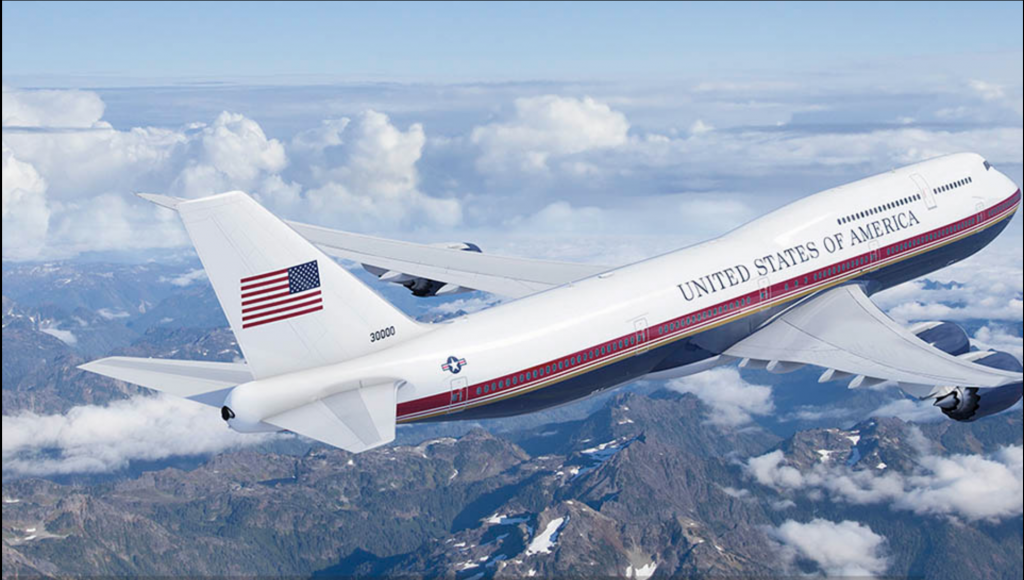The Air Force diverted what it says was excess funding from its delayed new nuclear missile program to modify a former Qatari royal jet for use as President Donald Trump’s Air Force One, the service’s top civilian said June 26.
But Air Force Secretary Troy E. Meink insisted the move will “absolutely not” delay Sentinel’s progress, saying that money was “early-to-need” funding the high-priority missile modernization project didn’t use last year.
“We will ensure that those resources are there,” Meink said at a June 26 Senate hearing on the Air Force’s 2026 budget request. “The Sentinel program is fully funded . . . to execute as quickly as possible.”
Turning the former Qatari jet, a Boeing 747-8, into the presidential transport is slated to take “just short of a year,” he added.
It’s unclear how much money the Air Force shifted from Sentinel to retrofit the Qatari jetliner. Lawmakers have said the service reduced the Sentinel budget in 2025 by nearly $1.2 billion, with the service’s 2026 budget documents citing the yearlong continuing resolution, under-execution because of a review related to cost and schedule overruns, and “service-assumed termination liability.”
Procurement budget documents, which could shed some light on the spending plans for the new Air Force One, have yet to be released. An Air Force spokesperson declined to elaborate on the secretary’s remarks.

Earlier this month, Meink estimated it will cost less than $400 million to modify the former Qatari jet with the security and communications equipment it needs to serve as Air Force One. That’s far lower than reported estimates from the Air Force that it could take $1.5 billion to bring the plane up to the safety and security standards set for presidential transport.
It’s also unclear whether the House and Senate armed services and appropriations committees would have to sign off on the transfer, as they often do when federal dollars change accounts.
Concerns about accepting a foreign jet to ferry Trump—after his administration inked a $3.9 billion contract for two new Air Force One planes in 2018—have become a common refrain among Democratic lawmakers at recent budget hearings.
Sen. Jeanne Shaheen (D-N.H.), at the June 26 Senate defense appropriations subcommittee hearing, raised news reports that the Qatari plane will be limited to domestic travel and will require a fighter escort if it lacks the security measures that are built into the main Air Force One program.
“This looks like one of the bigger wastes of money inside your budget,” Sen. Chris Murphy (D-Conn.) told Air Force leaders at the hearing. “It also presents some real ethical and moral problems, I think, for this committee.”
Meink declined to answer a question from Murphy on whether the 747-8 would enter Trump’s personal possession once he leaves office. Multiple media outlets reported in May that White House Counsel David Warrington wrote a memo in March stating that the government could send the plane to the Trump Presidential Library Foundation at the end of his term.
“I can just speak [to] what I’ve been asked to do, and what we’ve signed up to do,” Meink said. “The current [VC-25] is challenged from a readiness perspective, very challenged. It’s a very old aircraft.”
The secretary said he wasn’t sure whether the government has officially tapped a contractor to handle the retrofit, but that the Air Force can move forward with that contract once it takes possession of the jet.
Meanwhile, if the Air Force can agree on a way to accelerate the previously planned replacement, Boeing could deliver the pair of 747s, dubbed VC-25B in military parlance, in October 2027 at the earliest. That means Trump could use the Qatari plane for at least a year.
“The VC-25Bs are going to show up later than we’d initially hoped for, and I’ve been asked to modify this aircraft as soon as we get possession of it, and we are positioned to do that,” Meink said.
The Air Force is asking Congress for $602 million for the VC-25B in 2026, according to budget documents released June 27. The program’s total acquisition cost is now estimated at $6.2 billion for the two planes, according to the Government Accountability Office’s annual weapons report.
The service is also seeking $4.2 billion for Sentinel development next year. That funding would be split between $2.6 billion in the base budget and $1.5 billion as part of the reconciliation megabill under consideration on Capitol Hill. Congress may offer up to $2.5 billion in the “One Big, Beautiful Bill” to develop the new land-based nuclear missiles, which can be spent over the course of several years.
Northrop Grumman is building a new generation of land-based nuclear weapons to sit on alert in underground silos across the northern United States. Meink indicated the initiative now requires less money than expected in 2025 after its ballooning cost and slowing schedule forced Air Force officials to overhaul the program. That made some of the money Sentinel had received from Congress this year too early for the work it was intended to fund.
GAO recently noted that a “reasonably modified Sentinel program with redesigned launch facilities” could cost $170.6 billion.
Meink told senators the military is still reconsidering its requirements for the new missiles in a bid to rein in spending and speed their delivery.


